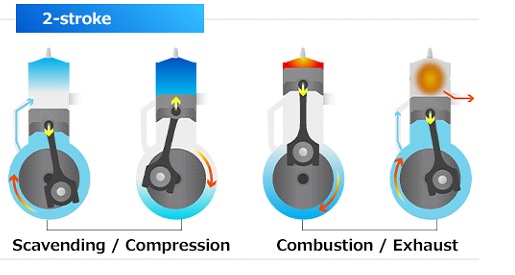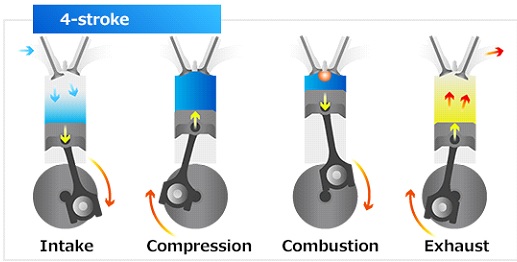Have you ever been confused between Two Stroke Vs Four Stroke Engine, if yes then you have landed on the right page?
After reading this article, you will be able to completely differentiate between Two Stroke Vs Four Stroke Engine.
Table of Contents
Two Stroke Engine:

- The two-stroke engine completes a power cycle in two strokes of the piston, while the crankshaft rotates only once.
- The two-stroke engine produces high torque.
- In the two-stroke engine inlet and outlet, ports are used for fuels.
- The two-stroke engine has a higher power-to-weight ratio.
- The two-stroke engine produces more smoke.
- The efficiency of a two-stroke engine is comparatively less than a four-stroke engine.
- The two-stroke engine required proper lubrication to run it smoothly.
- If proper lubrication is not done in a two-stroke engine more wear and tear will occur.
- The two-stroke engine is cheaper than the four-stroke engine.
- It takes simple manufacturing to produce a two-stroke engine.
- Two-stroke engines are lighter compared to four-stroke engines.
- This type of engine produces higher noise compare to four-stroke engines.
- Two-stroke engines are usually ideal for lighter or smaller vehicles.
Four Stroke Engine:

- The four-stroke engine completes the power cycle in 4 strokes of the piston.
- The two-stroke engine generates low torque.
- The four-stroke engine is very high in weight
- It is more expansive compared to the two-stroke engine.
- This type of engine requires more space.
- Thermal efficiency is very high.
- Mechanical efficiency is low due to high friction.
- It creates less noise.
- The wear and tear of the moving part are low.
Pistons In Four Strokes Engine:
1. Intake Stokes:
This is the stokes in a full cycle of the internal combustion engine in which fuel is drawn to the combustion chamber before compression happens.
2. Compression Stokes:
In compression strokes, the fuel mixture is compressed before it gets to ignites. The intake valves close and the piston moves up for compressing the air-fuel mixture in the combustion chamber.
3. Power Stokes:
In power, stokes fuel gets burned and energy is produced to run the engine. The piston moves down due to the expansion of gases. This is the most important stokes of the engine. From the name itself, you can get an idea that in this stokes power is produced to run the vehicle.
4. Exhaust Stokes
It is the last stokes in a full cycle of piston stokes. In these stokes, the piston removes the exhaust gases from the exhaust ports.
Read More:
Differences Between SI Engine and CI Engine
